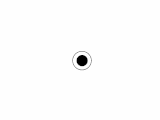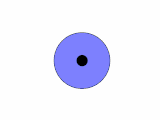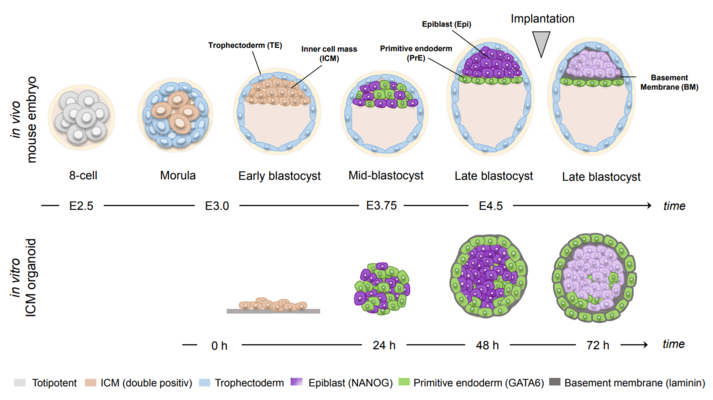Preimplantation Development
Summary
Preimplantation development is key to mammalian pregnancy success. About 70% of pregnancies fail during the first few days before the embryo is ready for implantation. During the preimplantation phase, the fertilized oocyte divides several times to separate into three distinct populations of cells that will give rise to the embryo proper, the placenta and the yolk sac cells.
In this project, we investigate the complex and highly dynamic process of cell decision and cell patterning in the preimplantation mouse embryo. Based on the experimental data from our collaborators Dr. S. Muñoz-Descalzo (ULPGC, Gran Canaria, Spain) and Dr. C. Schröter (MPI Molecular Physiology, Dortmund), we use a combination of three-dimensional image analysis followed by statistical data analysis to generate hypotheses concerning the distribution and patterning of different cell types.
This project is funded by the Deutsche Forschungsgemeinschaft project number 470129398 and start-up funding by the University of Würzburg.
Agent-based modelling




In agent-based modelling, we describe the temporal evolution of individual cells. This is done in the following steps:
- Acquiring nutrients allows cells to grow, effectively increasing their radii.
- Cells divide so that two daughter cells arise from one parent cell. A combination of adhesive and repulsive forces hold the cells together.
- Complex chemotactic processes within cells regulate cell fate decisions. During preimplantation this decides whether cells become part of the embryo (magenta) or the extraembryonic tissue (cyan).
Interactions between the cells complete the picture, i.e. the description of single cells in combination with cell-cell communication enable us to recreate the complex biological processes during preimplantation development. By allowing hypotheses to be tested for correctness in advance, we rapidly gain new insight into the fundamental mechanisms involved and additionally reduce the workload of experimental scientists.





